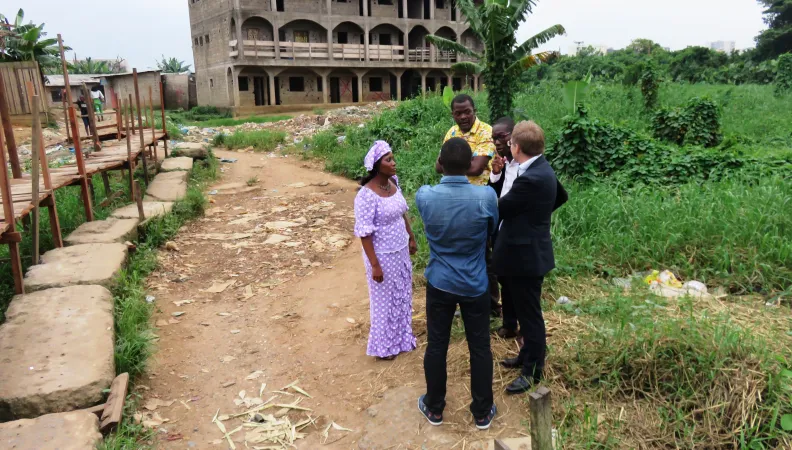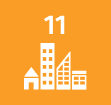Share the page
Douala, Sustainable City: sustainable management and development of the Makèpè – Missokè site
Project


-
Project start date
-
Status
In progress
-
Estimated date of project termination
-
-
Project financing date
-
-
Financing duration
-
4 years
-
Type of program
-
FFEM
-
Global financing amount
-
6 000 000 €
-
FFEM financing amount
-
1 500 000 €
-
Project lead member institution(s)
-
AFD
-
Country and region
-
Cameroon, Central Africa
-
Type of financing
-
Grant
-
Partners
-
AFD
-
Beneficiaries
-
The Urban Community of Douala
-
Type of beneficiary
-
Public local authority



The Urban Community of Douala intends to put combating climate change and preserving natural environments at the heart of its urban development policy. This approach is being applied to the redevelopment of the Makèpè Missokè test site in the aim of developing new replicable development practices, to build a resilient city.
Context
Douala has been characterised for decades by its strong urban growth and significant spread. This rapid and not very well-planned urbanisation (lacking an approved planning scheme between 1959 and 2012) has led in particular to settling unstable populations in wetland areas, near drains. These populations combine with a major vulnerability:
- to floods;
- socio-economic: lack of basic infrastructure, poor sanitation situation, informal activities, occupation without property title, etc.
Moreover, urbanisation leads to the degradation and disappearance of wetlands and the regulatory functions which they have played thus far; this is in a context of climate change (anticipated increase in the frequency of heavy rainfall and aggravation of the heat island phenomenon).
Consideration of the effects of climate change is more recent: Cameroon has recently published its National Climate Change Adaptation Plan (2015). Douala is taking part in this process. It is at the forefront of a network to formulate responses from central African cities to environmental and climate challenges, in the context of the works of the International Association of Francophone Mayors (AIMF).
Description
The project is organised into four parts:
- Build on knowledge and taking into account the flood risk and effects of climate change in the city planning documents: based on an exercise in coordination with the actors (Universities, Collectors of local and national meteorological data, Design consultants, etc.), the project aims to provide Douala Urban Community (CUD) with the means to evaluate locally the flood risk and the effects of climate change, in order to take into account the urban planning documents.
- Design and implemente a restructuring project for an at-risk inhabited area based on the recovery of a wetland area, to transform this space experienced as a risk vector (flooding and insalubrity) a major asset in the development of the area: area for storing rain water and green lung limiting heat islands and providing amenities.
- Encourage the development of economic activities on the project site, building on existing activities (recycling and market gardening) while creating new activities made possible through the development of bodies of water.
- Capitalise to reproduce the project on similar sites: this is an overarching objective and links all actions undertaken. It is a matter both of developing know-how within the CUD (combining global thinking with local action), while also disseminating the results of the experience to encourage its reproduction in other sectors of the city.
Outcomes
- Introduce a local urban observatory to monitor climate change/fine modelling of the flood risk.
- Restructure of the at-risk inhabited areas of the site and landscape design and restoration of the wetland using a service-level approach.
- Enhance and develop of recycling and market gardening/local job creation around recreational activities.
- Capitalize on lessons for reproduction on other sites.
Innovative and exemplary features
Considering the objectives of Douala’s Agenda 21 and the prescriptions of the land use plan (POS), the project supported by the FFEM is particularly innovative. This is due to the integration of urban biodiversity within these residual urban spaces, which are typically neglected. Indeed, the targeted neighborhood was selected for its environmental quality and its potential to serve as a pilot site, replicable in other parts of the city.
Moreover, the proposed methodology and innovative interventions appear fully replicable as they rely on simple arrangements and leverage local capacities. The objective is to influence current urban practices and to safeguard other threatened natural areas, particularly within urban environments.
Sustainable Development Goals
ODD11 Sustainable cities and communities

ODD13 Climate action

ODD17 Partnerships for the goals



